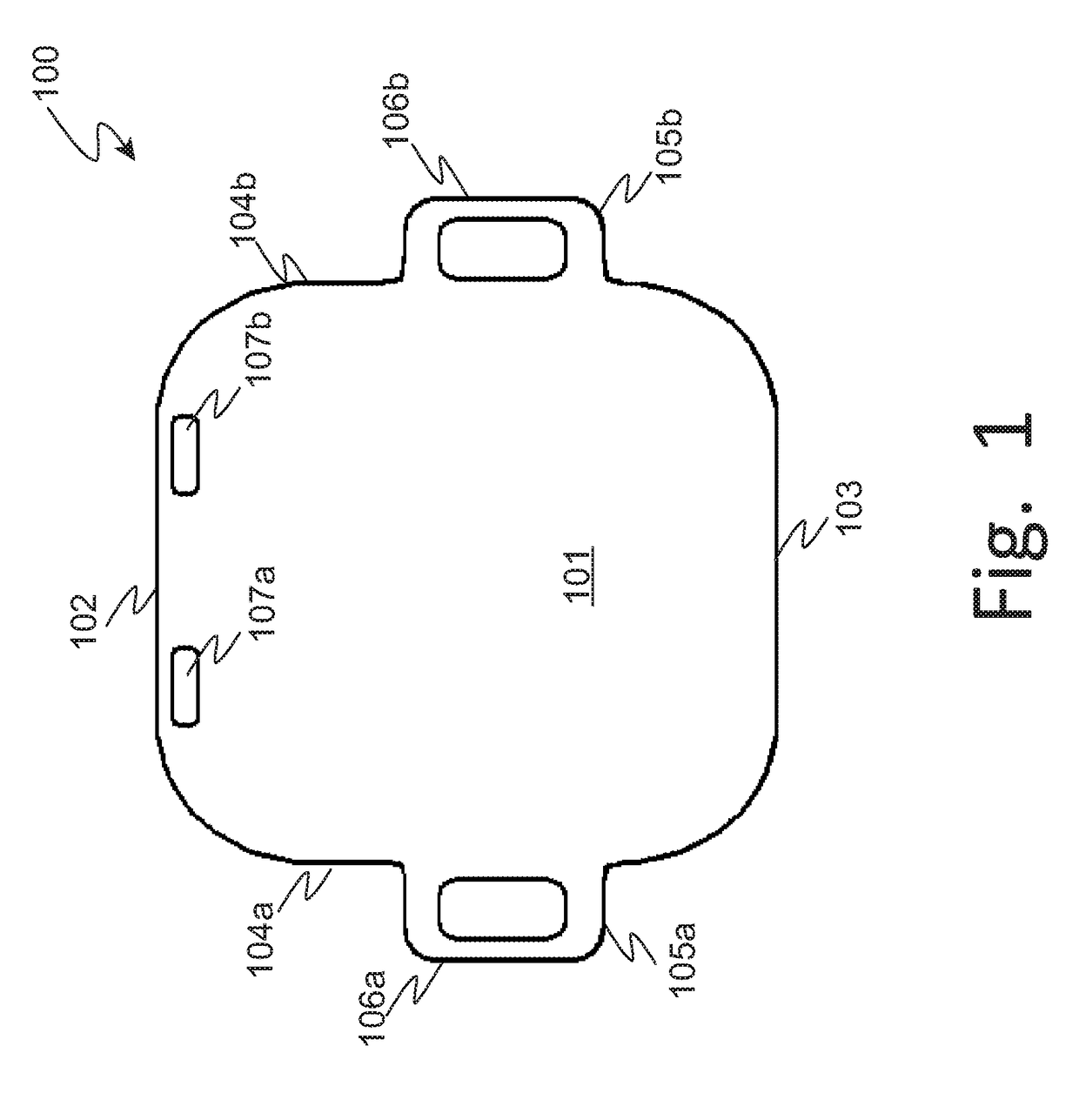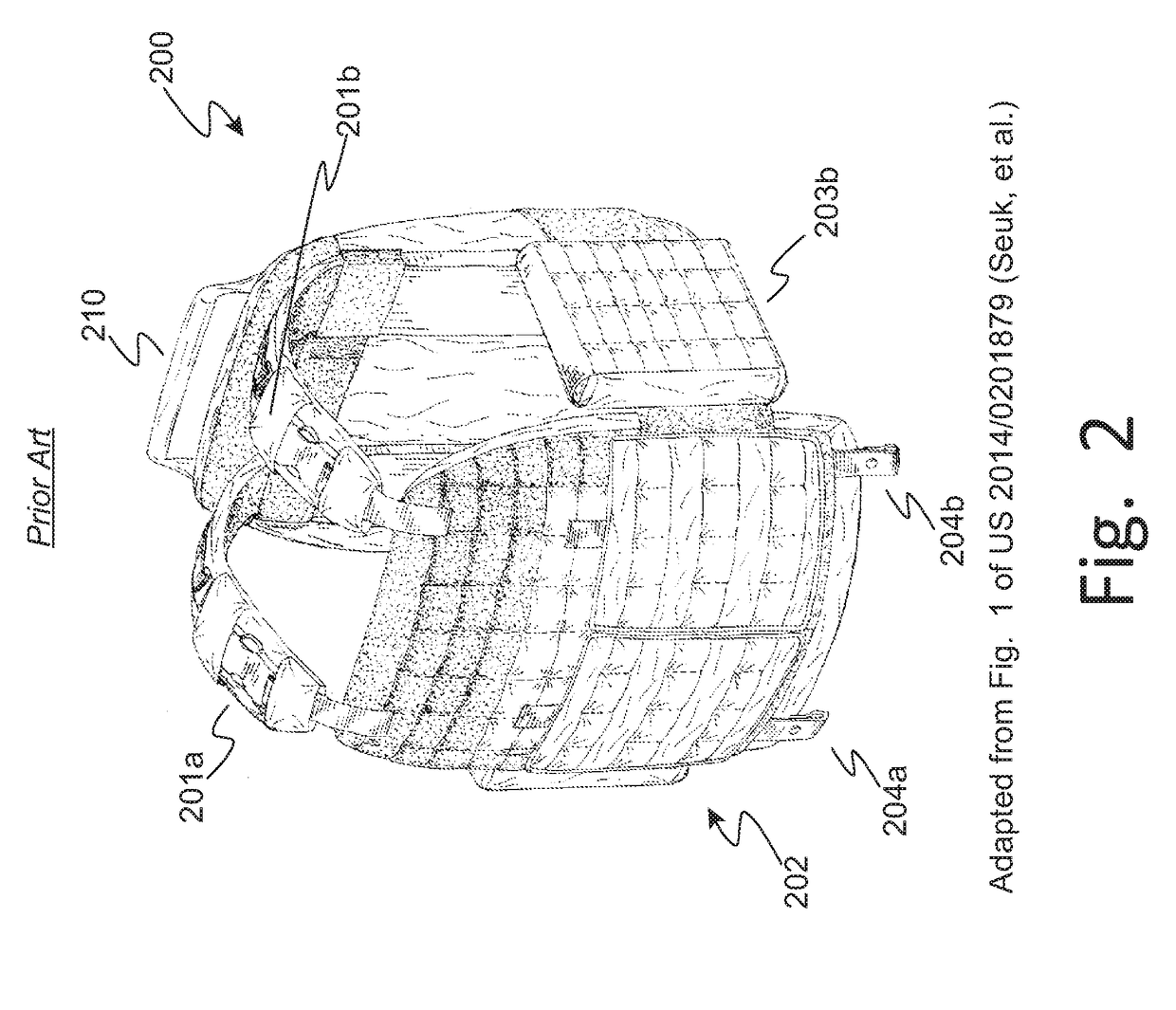Wearable Casualty Sled
- Summary
- Abstract
- Description
- Claims
- Application Information
AI Technical Summary
Benefits of technology
Problems solved by technology
Method used
Image
Examples
Embodiment Construction
[0006]A wearable rescue sled is disclosed which is constructed of a durable sheet material having a smooth, low-friction surface, an upper edge, a lower edge, and two side edges, with attachments along the upper edge for attaching the sled to a rear panel of a vest such as a military or law enforcement protective plate carrier vest. A releasable stowing retainer holds the sled in an stowed position approximately conformant to the rear panel of the vest. To effect a rescue of the sled's wearer, a rescuer releases the stowing retainer such that the sled hingably swings or slides down to depend from the attachments, forming a flexible low-friction seat for dragging a wearer of the vest. The rescuer may now drag the wearer in a semi-inclined seated position wherein the sled rides between the hips of the wearer and the ground surface to reduce friction and snag dangers.
BRIEF DESCRIPTION OF THE DRAWINGS
[0007]The description set forth herein is illustrated by the several drawings.
[0008]FIG...
PUM
 Login to view more
Login to view more Abstract
Description
Claims
Application Information
 Login to view more
Login to view more - R&D Engineer
- R&D Manager
- IP Professional
- Industry Leading Data Capabilities
- Powerful AI technology
- Patent DNA Extraction
Browse by: Latest US Patents, China's latest patents, Technical Efficacy Thesaurus, Application Domain, Technology Topic.
© 2024 PatSnap. All rights reserved.Legal|Privacy policy|Modern Slavery Act Transparency Statement|Sitemap



